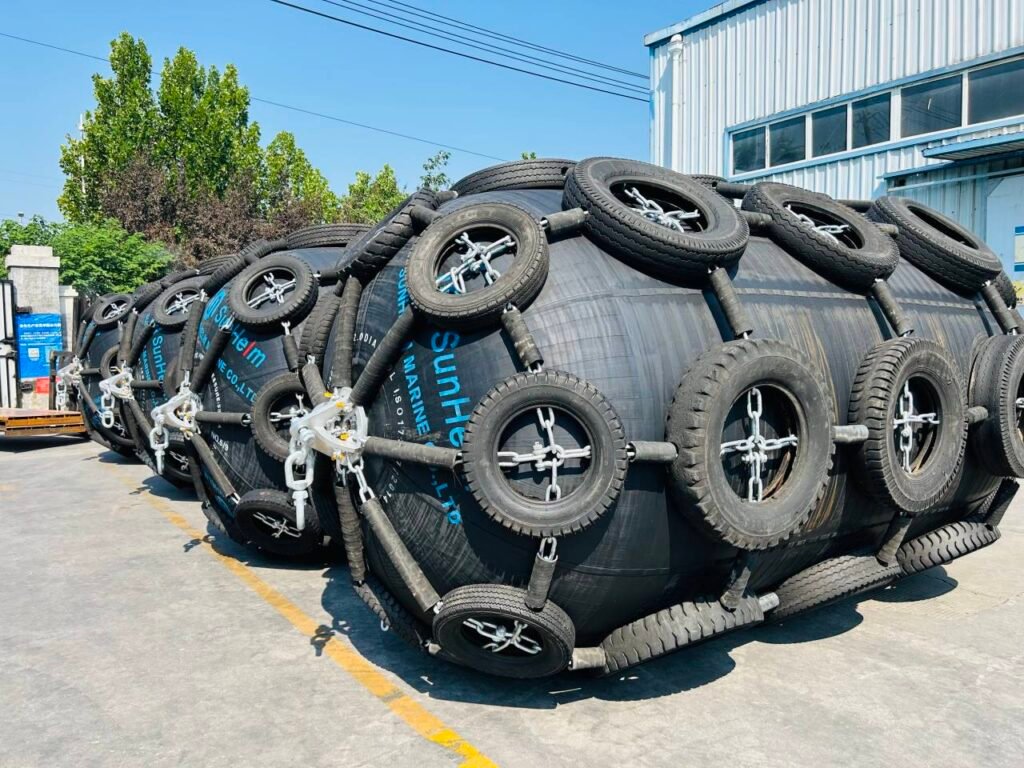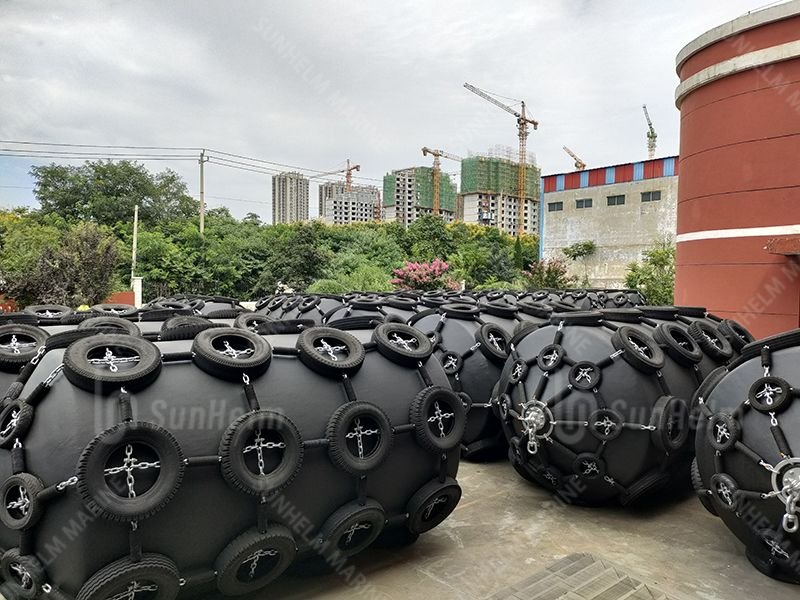Why is choosing the right pneumatic fender critical—and why now?
When rough seas and heavy swell strike, ordinary rubber bumpers fail. A harsh example: During recent typhoons, vessels using standard pneumatic fenders in Southeast Asia experienced hull damage and downtime. That’s why marine operators can’t afford to compromise. Upgrading to heavy‑duty pneumatic rubber fenders now can prevent costly repairs, cargo damage, and safety hazards when sea states change suddenly.

Best Pneumatic Fenders for Rough Seas: What Makes Sunhelm Stand Out?
Sunhelm pneumatic rubber fenders, covered with a chain & tyre net, deliver exceptional protection and longevity:
- ISO 17357–compliant high-pressure design, exceeding burst‑pressure safety factors by 5×
- Cross-wound synthetic-cord structure with 100 % natural rubber for high energy absorption and deflection even at 15° compression
- Heavy‑duty tyre net safeguards both hull and fender from abrasion and sharp impacts
- Foldable design—deflates for packing, saving up to two‑thirds of transport costs
- Two internal pressures available (50 kPa/80 kPa) with a self‑patented safety valve and 24‑month warranty
Real‑world proof: Sunhelm units have been successfully deployed offshore, as seen in a demonstration of their 1 m × 2 m tyre‑net pneumatic fender.
Feature Comparison: Pneumatic vs. Foam & Marine Fenders
| Fender Type | Rough‑Sea Performance | Hull Reaction | Transport | Maintenance |
|---|---|---|---|---|
| Sunhelm Pneumatic (tyre‑net) | Excellent—ISO high‑pressure, 15° compliance | Soft, even pressure | Deflates—low shipping cost | Low; annual pressure check |
| Generic Foam‑filled | Good, but rigid under tilt | Moderate reaction | Large & heavy | Moderate; cannot deflate |
| Solid Extruded Marine Fenders | Limited—high load, low deflection | Stiff; high impact | Bulkier, heavier | Simple, but wear faster |
Featured Snippet #1
Sunhelm heavy‑duty pneumatic rubber fenders offer superior protection in rough seas, with high‑pressure ISO compliance, chain & tyre net reinforcement, foldable design for transport savings, and low maintenance needs—all backed by a 24‑month warranty.
Featured Snippet #2
Marine operators facing rough waters should choose pneumatic fenders with tyre nets like Sunhelm’s—they provide soft, even hull pressure, excellent shock absorption, and survive high tilt angles during heavy swell.
Related Questions (People Also Ask)
What are pneumatic rubber fenders?
These are floating fenders—also called Yokohama fenders—made of air-filled rubber reinforced with synthetic cord, ideal for ship-to-ship and vessel-to-quay operations.
How do marine fenders differ from ship fenders?
“Marine fender” is the broad category; “ship fender” is specifically used onboard vessels. Pneumatic types float freely and adapt to tidal shifts.
Why use tyre‑net on pneumatic fenders?
Tyre-net protection guards the rubber body and vessel hull from abrasion and sharp edges—essential for harsh weather and offshore docking.
What size fender do I need?
Choose based on vessel displacement and expected berthing energy—diameters range from 0.5 m to 4.5 m, lengths up to 9 m, with pressures at 50 or 80 kPa.
Pro Tips for Choosing Pneumatic Fenders
- Match the ISO 17357 standard for size, pressure, and certification compliance.
- Select the tyre‑net type for operations in rougher seas or harsh docking conditions.
- Opt for 80 kPa if handling large vessels or heavy berthing forces.
- Ensure easy transportability—foldable fenders save logistics costs.
- Verify after‑sales support and warranty—Sunhelm offers 24‑month peace of mind.
Final Takeaway
When sailing or docking in rough seas, standard marine fenders are risky. Sunhelm’s heavy‑duty pneumatic rubber fenders with chain & tyre net offer unmatched protection, deflection, durability—and save on shipping costs. Don’t wait for accidents to strike: invest in Sunhelm’s tyre-net pneumatic fenders now and protect your fleet, cargo, and reputation.


